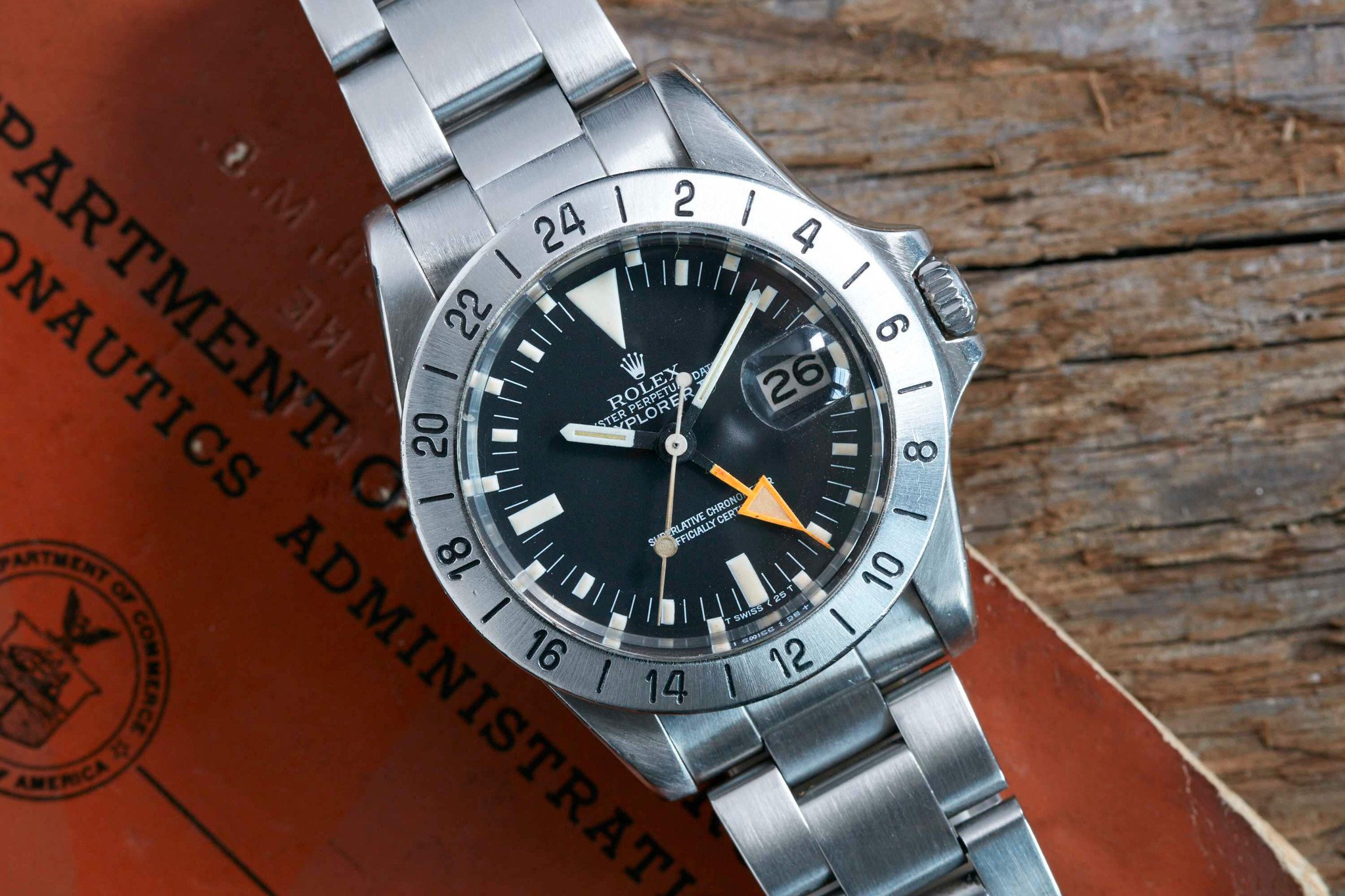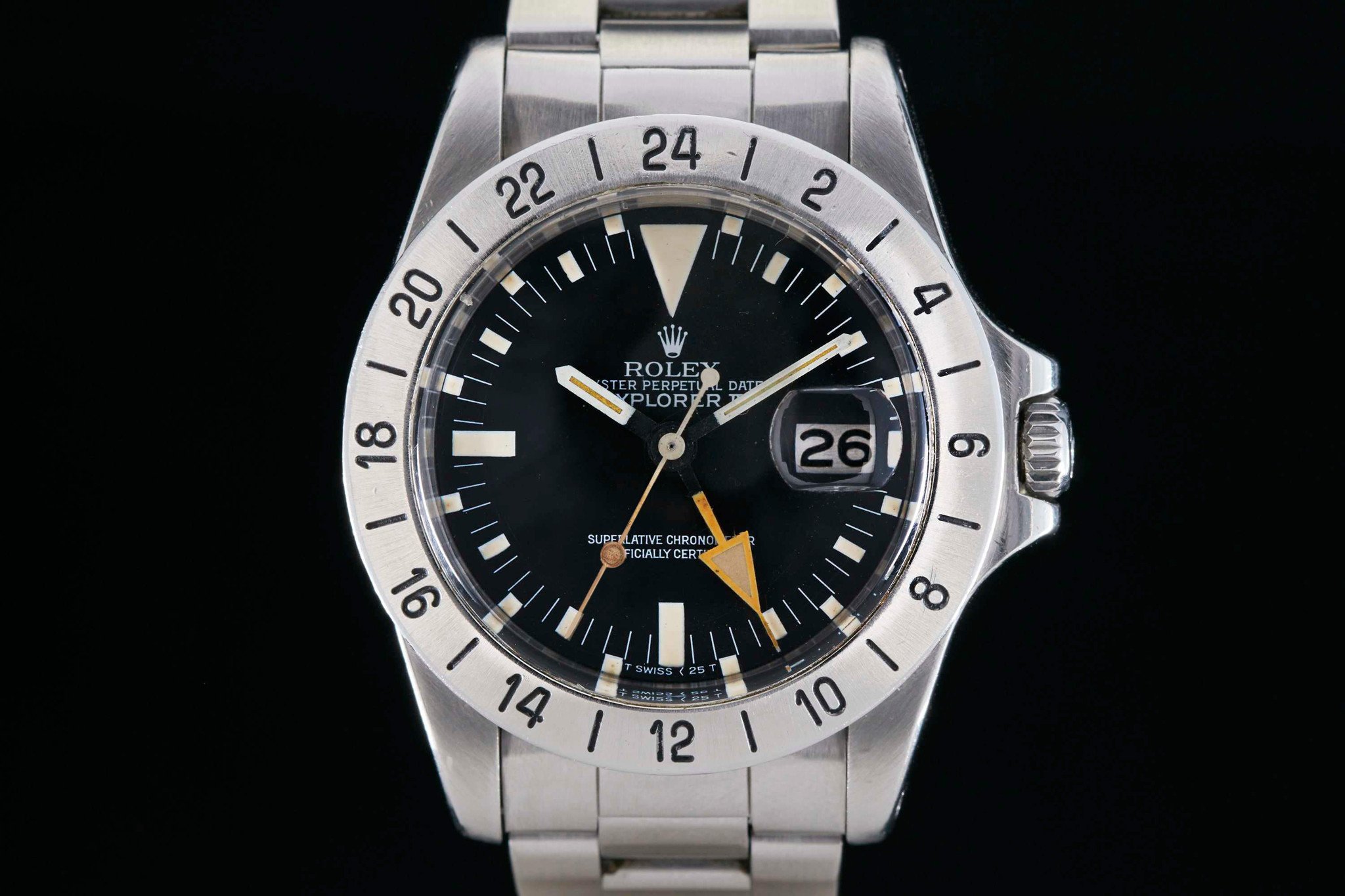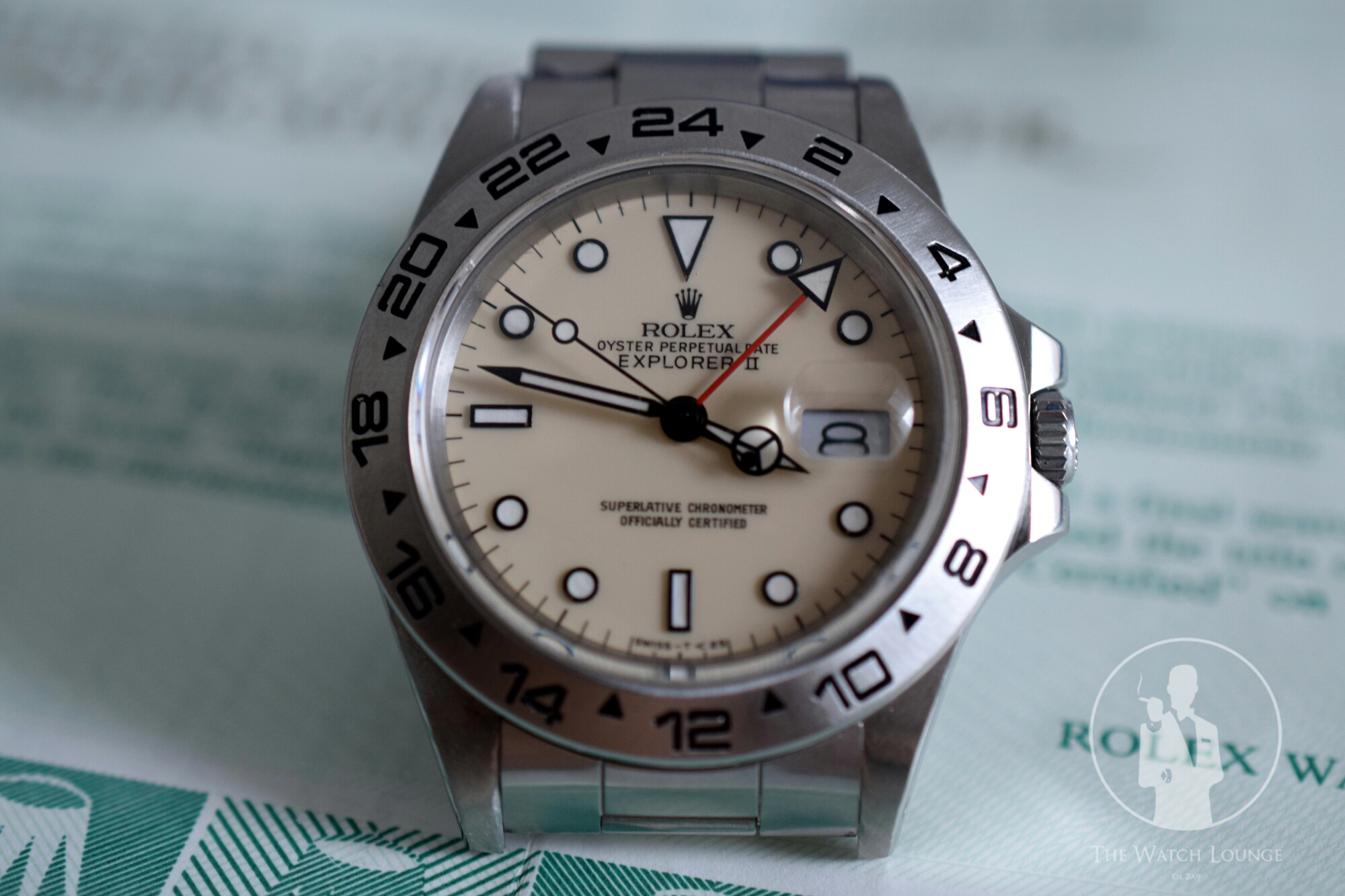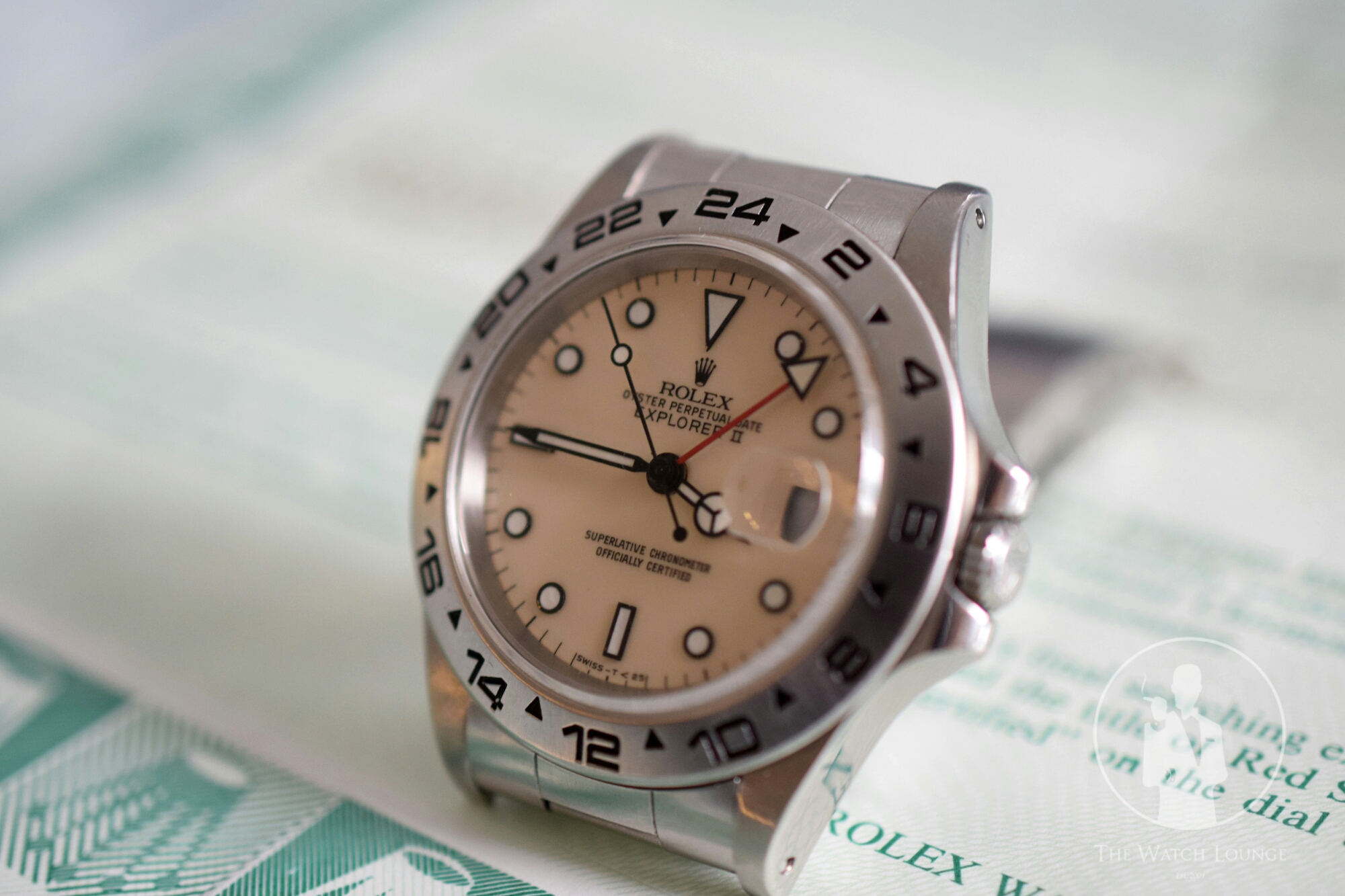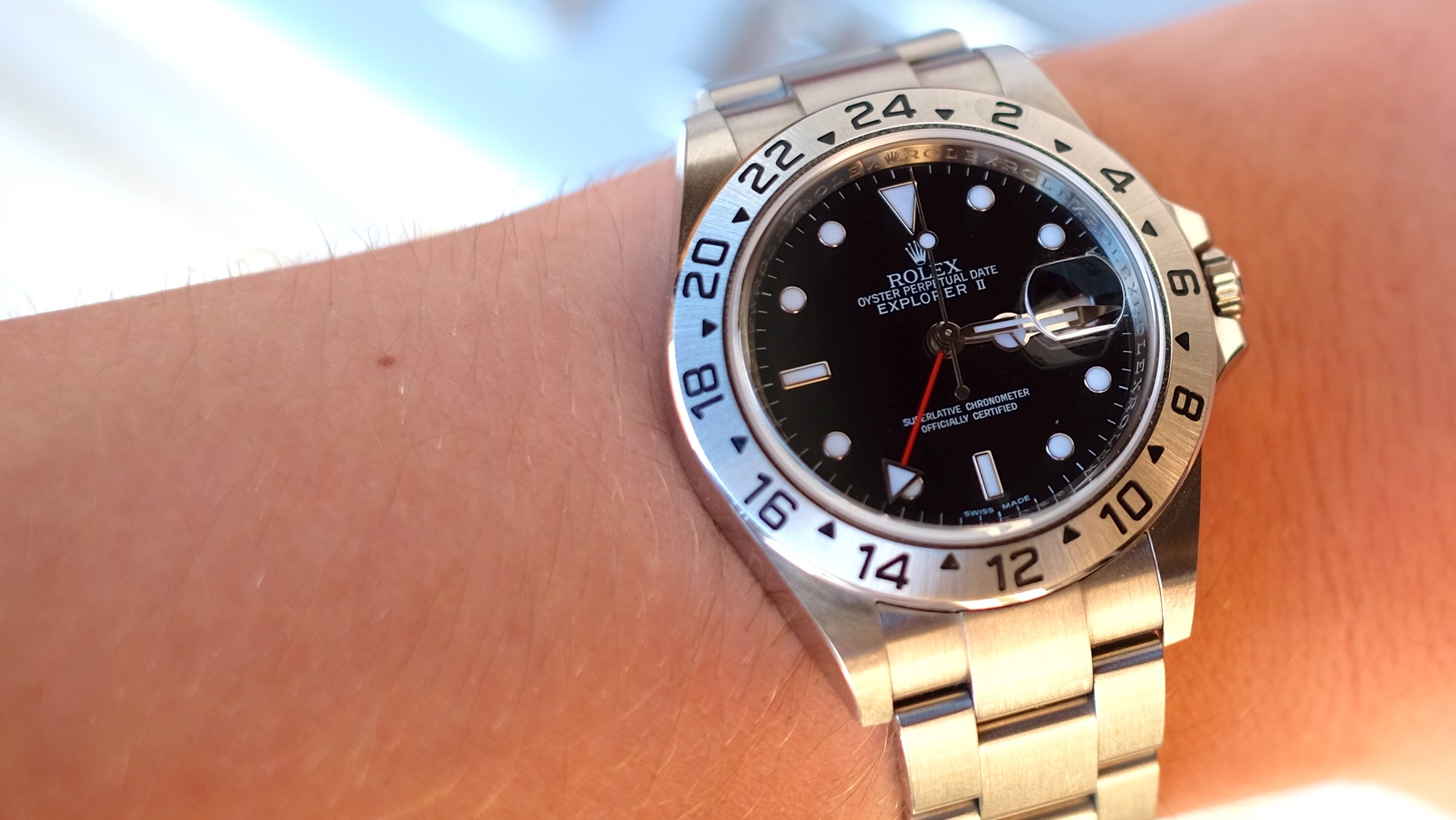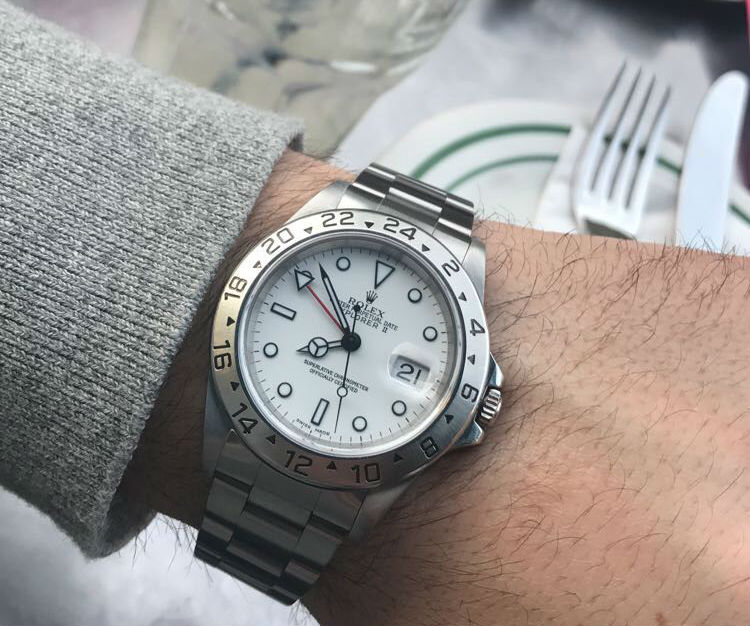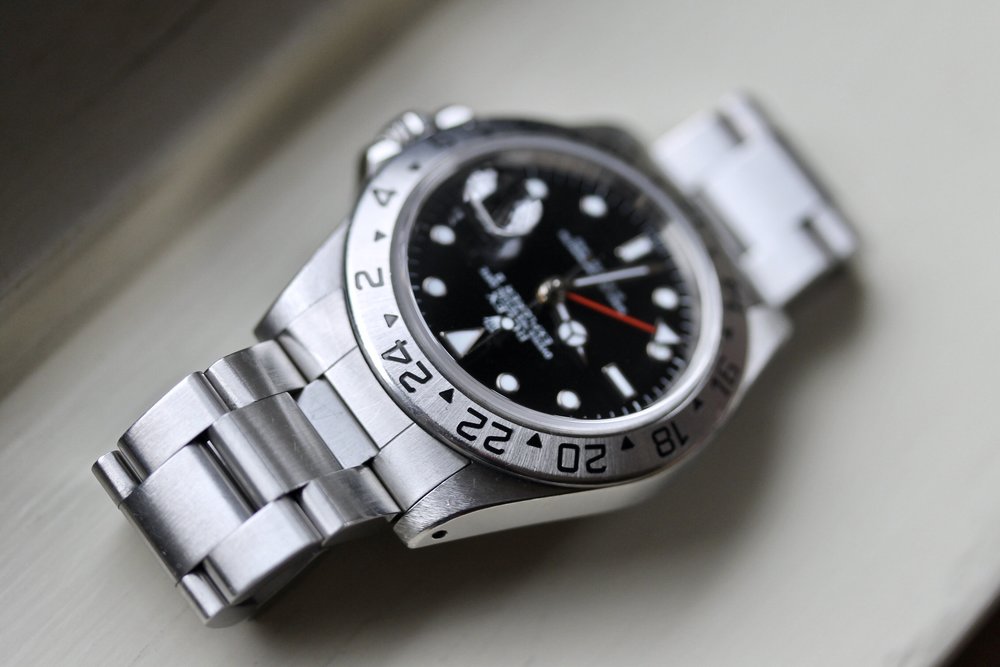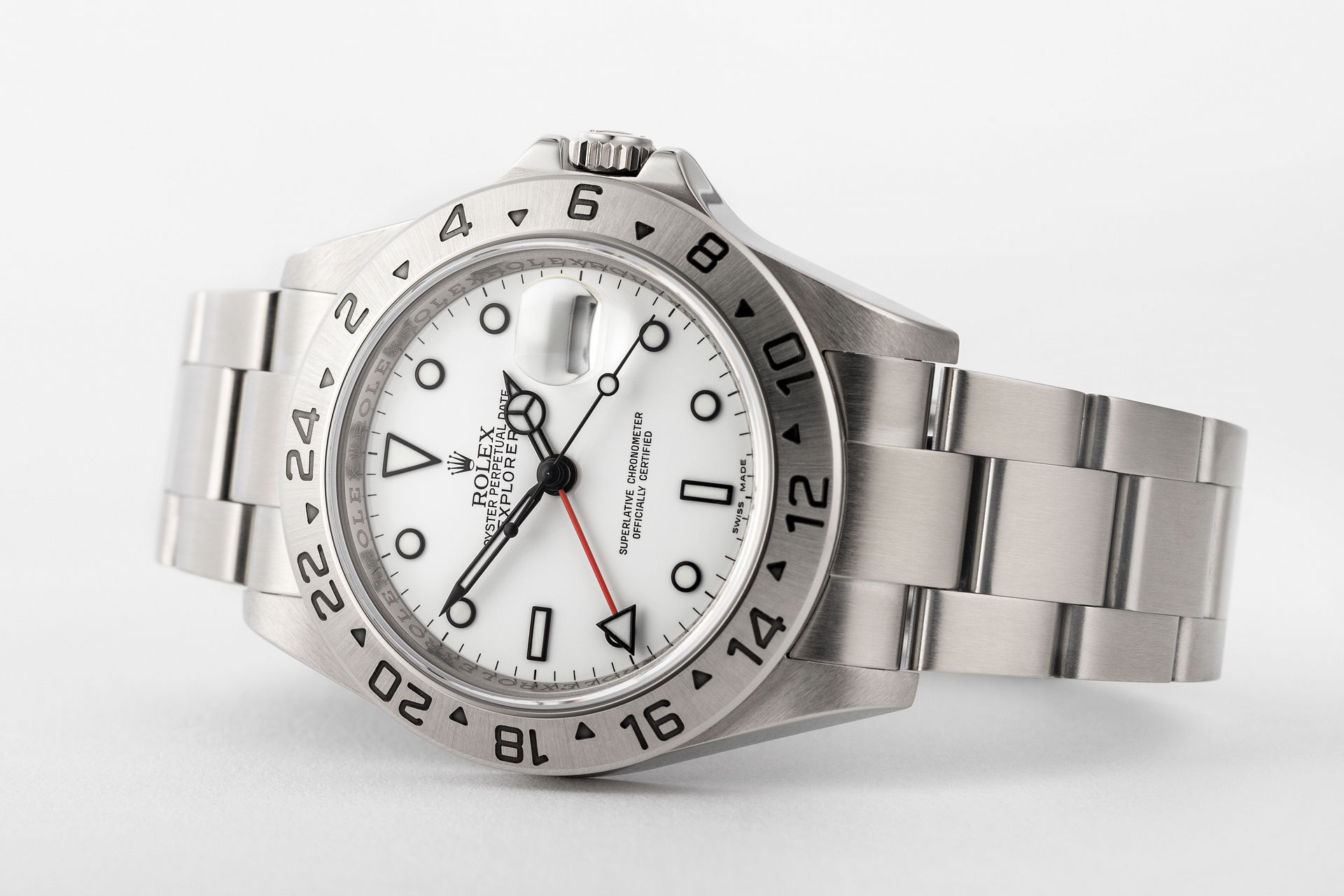The Rolex Explorer II Ref 16570 is something of a paradox. In production for 22 years, it is not a rare watch by any means. And yet it is very popular. So much so that it was the top-selling steel watch on Chrono24 in 2020. Which given the competition is quite an achievement. Pricing remains reasonable (for now). But whether it will stay that way is anyone’s guess. After all, the Ref 16570 does have a lot going for it. Distinctive good looks. Practical functionality. And a decent bit of history behind it. Let’s dig in to the details of why this reference could be the best Explorer II for your money.
A (Very) Brief History Of The Rolex Explorer II
Most watch enthusiasts have at least a passing knowledge of the Explorer II. It’s the younger, larger sibling of the Rolex Explorer. A simple time only watch that introduced the now iconic 3-6-9 layout in 1953. As the name suggests, the first model aimed to serve the specialist needs of explorers. Providing them with a watch that was tough, rugged, reliable and easy to use in all conditions. Feedback received from the 1953 British Mount Everest expedition directly informed its design. The only problem was, it didn’t suit the needs of all explorers. For example, speleologists. People who make their living spending extended periods of time in caves.
This led, in part, to the creation of the Rolex Explorer II Ref 1655. Which made its debut in 1971. At 39mm, it was bigger than its elder sibling. And more functional too. The steel case featured a fixed bezel with 24-hour markings. Used in conjunction with the orange 24-hour hand, the wearer could see what time of day or night it was. Useful if you’re in a dark cave and have no reference points.
- An example of a Rolex Explorer II Ref 1655 from circa 1980 – Credit: AnalogShift.
The obvious question though is how do you read the 24-hour scale in the dark? After all, the numbers on the bezel are not luminous. Instead, Rolex put extra lume plots on the dial. Like many watches, the Ref 1655 features luminescent markers at five-minute intervals. But there are also small luminous squares every 2.5 minutes too. This results in 24 glow-in-the-dark accents. Or one for each hour of the day. There’s also a date window at 3 o’clock. Again, useful for people spending extending periods of time away from daylight.
Inside was the Rolex calibre 1570/1575. The same movement used in the GMT-Master. Unlike that watch though, the bezel on the Ref 1655 didn’t rotate. Meaning it couldn’t display a second time-zone. This made it less attractive to the wider market. After all, few people needed a watch designed more or less for exploring caves. And so, despite being in production for 14 years, the Ref 1655 was not a great seller. At the time, anyway.
That’s all changed now, of course. The Ref 1655, or “Freccione” as it’s called by collectors, is the most sought-after Explorer II. The nickname comes from the Italian word “freccia”, which means arrow. A somewhat obvious reference to the orange arrow-tipped hand. Although still a bit more creative – in my mind at least – than “Batman”, or “Smurf”. Don’t you love Rolex nicknames?
- An example of a Rolex Explorer II Ref 1655 from circa 1980 – Credit: AnalogShift.
You might have also heard it called the “Steve McQueen Rolex”. That’s because the American actor owned one. Or so they say. But as far as I’m aware there’s no conclusive evidence to support this. And so, the authenticity of the claim remains disputed.
Ref 16550 – The ‘Transitional’ Explorer II
In 1985, Rolex replaced the Ref 1655 with the Ref 16550. What people in Rolex circles would call a ‘transitional’ model. That’s because it introduced several key changes but only had a short production life. The changes themselves though, would carry through for the next two decades. Albeit with some tweaks. So, what were they?
For a start, a larger 40mm case size. Bringing it in-line with other Rolex steel sports models, such as the Submariner. (Although that model has now changed to a 41mm case size). Ditto for Rolex’s iconic Mercedes-style centre hands. The arrow-tipped 24-hour hand became longer and thinner. And changed color from orange to red. It also now sat under a sapphire crystal. Inside the case was a new movement, Calibre 3085. This introduced separate operation of the 24-hour hand independent from the centre hands. Making the Explorer II a true GMT watch.
- A Rolex Explorer II R Series with cream dial from 1987.
The biggest change though was the dial. Criticism of the earlier Ref 1655 often referenced its “too busy” dial. And the fact it was only available in black. With the Ref 16550, Rolex introduced the option of a white dial. The lay-out was also simplified. It is much more akin to the brand’s other tool watches. Such as the Sea-Dweller. Most had white gold surrounds around the indexes and hands. But some later versions, had black surrounds instead. The idea being to make them stand out against the white of the dial. This was introduced on all models from the Ref 16570 onwards.
The status of the Ref 16550 as a “transitional” model makes it a popular choice for collectors. Especially because a defect in the white dial paint causes it fade to cream over time. Much like the Tropical Dial Rolex Daytona fades to brown. See the picture below (and above) for an example of what this looks like. Spoiler: it’s very cool.
- A Rolex Explorer II R Series with cream dial from 1987.
A mere four years later the Ref 16550 came out of production. Replaced by the updated Ref 16570 in 1989. A reference that would stay in production for the next 22 years. At which point the current Ref 216570 made its debut on the model’s 40th anniversary. It’s this long production life, along with other factors, that make the Ref 16570 a great buy for your money. So, let’s talk some more about what those factors are.
The Rolex Explorer II Ref 16570
As mentioned before, the Ref 16570 is/was a tweaked version of the Ref 16550. It didn’t introduce any revolutionary changes. But it did address some of the quirks of its predecessor. And introduce the newer Calibre 3185. Later updated to the Calibre 3186 around 2006. The steel case remained the same 40mm in diameter. And the recognisable Explorer II dial continued to be available in black or white. With a thin, arrow-tipped 24-hour hand in red. And a fixed 24-hour steel bezel.
- A black dial Ref 16570. Image credit: RolexForums.
I know none of that sounds too exciting, and it isn’t. But by the same token, the reason the Ref 16570 remained more or less unchanged for 20+ years is because it’s such a great watch. Rolex had ironed out some of the kinks of the previous models. Now it’s true those quirks make certain earlier pieces more collectible. But we’re not all collectors. Nor do we all want to pay a premium for a watch that we then wouldn’t feel comfortable wearing. This is why the Ref 16570 is an excellent compromise.
At 40mm in diameter by 12.2mm-thick, it’s the ideal size for a Rolex steel sports watch. But one that you can wear for about any occasion you can think of. Remember that its successor, the Ref 216570 is a chunkier 42mm. And much less understated. Likewise, the Ref 16570 offers excellent functionality. Comparable to that of its stable mate the GMT-Master II Ref 16710 but without the price premium. Plus, it’s true tool watch. When Rolex designed the Ref 16570 they had adventurers and explorers in mind. Which is why it’s also water resistant to 100m.
- A ‘Polar’ dial Rolex Explorer II Ref 16570. Image Credit: BeSpokeUnit.com.
The Calibre 3185 inside is now “old” technology by Rolex standards of course. But it’s still a rugged and reliable self-winding movement. It was also Rolex’s first with an independent hour hand and features hacking seconds as well. Beating at a standard frequency of 28,800 vph, it delivers a respectable 50-hour power reserve. If serviced at regular intervals, you shouldn’t have any issues with longevity. Or reliability. The Calibre 3186 features a parachrom hairspring. An upgrade for sure but not one I would necessarily pay a premium for.
The Ref 16570 comes on Rolex’s classic Oyster bracelet. But there is some slight variation over the years that’s worth noting. For a start, most earlier examples – pre-2000s – have drilled lug holes. This is easy to spot by looking at the side of the case where the bracelet connects. There are pros and cons to this. The obvious pro is that it makes strap changes very easy. The con is that some people don’t like the way it looks. Instead they prefer the cleaner aesthetic of non-drilled cases.
- A black dial Rolex Explorer II Ref 16570 with drilled lug holes – Image Credit WatchPatina.com
Another point, especially on older models is hollow-end links. Again, this is a matter of personal preference but can make the watch wear a little different on the wrist. Solid end links (SELs) were also introduced around 2000. It is possible though to find a Ref 16570 with solid end links and drilled lug holes. Newer examples feature the flip-lock clasp but there’s no glide-lock adjustment here. Another reason for considering a strap change.
Pricing & Availability
Pricing for the Ref 16570 has been going one way the past few years. Like most – all – steel Rolex sports models. The white – Polar – dial versions attract a small premium over the black dial versions. And you can expect to pay between US$8,000 – $9,000 for a mint example. Black dial versions can be had for US$7,500 – $8,500. This compares to a couple of years ago when both models were changing hands for sub US$6,000.
Is It Collectible?
- A ‘Polar’ dial Rolex Explorer II Ref 16570. Image Credit: RolexForums.
Interest in the Ref 16570 is being driven in part by the fact that 2021 is the 50th anniversary of the Explorer II. People are expecting big things from Rolex this year on that front. And as they say, a rising tide lifts all boats. But there is also a growing recognition of the excellent value for money this model offers. For now. Likewise, its long production run means that good examples are plentiful. This is not a rare watch by any means.
That doesn’t mean it’s not still collectible though. The Ref 16570 is the last 5-digit Rolex reference. Plus, it’s an attractive and functional watch. And it’s not like they’re making any more of them. As time goes on it will become more and more desirable and less and less available. So continued price appreciation is likely to expected. Albeit not at the same rates as you would see on other modern Rolex references. Such as the Kermit or Zenith Daytona.
On the flip side though, the Ref 16570 is a watch you can wear and enjoy now. And without attracting the same level of scrutiny – or unwanted attention – as say a Daytona or GMT-Master II. Which makes it one of the best versions of the Explorer II for your money. At least in my book.
Technical Specifications: Rolex Explorer II Ref 16570
- Case: Oyster – 40 mm – Oystersteel – monobloc middle case, screw-down case back and winding crown – fixed bezel with 24-hour scale – twin-lock double waterproof crown – waterproof to 100 metres / 330 feet.
- Dial: White(Polar) or Black – arrow-tipped 24-hour hand in red – 18ct gold hour markers – Tritium or Luminova paint for illumination (depending on serial).
- Movement: Calibre 3185 or 3186 – bidirectional self-winding via Perpetual rotor – Parachrom hairspring (3186 only) – 48-hour power reserve – Centre hour, minute, seconds and 24-hour hands – Stop-seconds for precise time setting – COSC-certified chronometer.
- Price: discontinued/ ~USD 7,500 – USD 9,500 preowned depending on model and condition.
This article by TheWatchLounge has been sponsored by our partner WatchBox.
